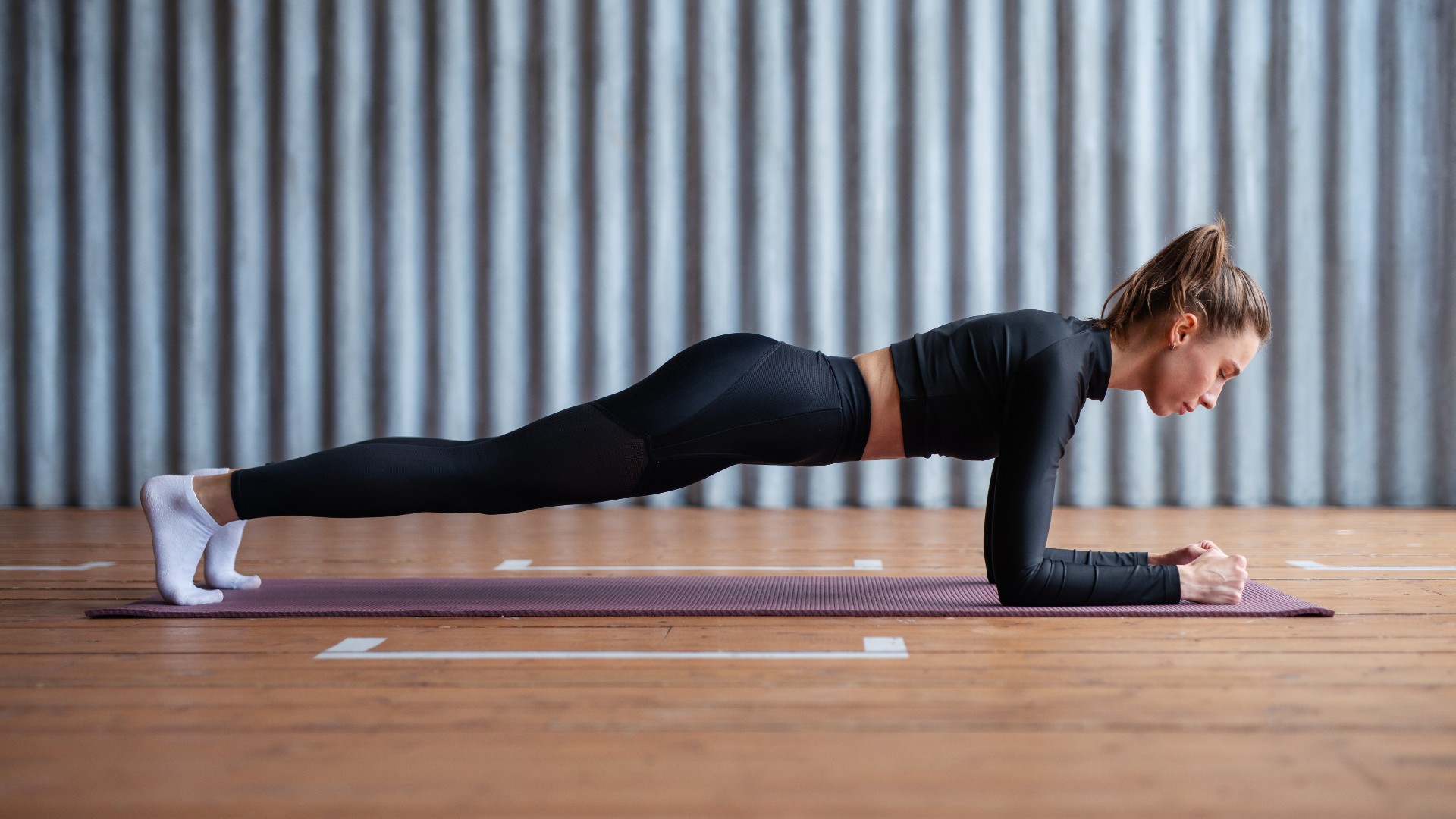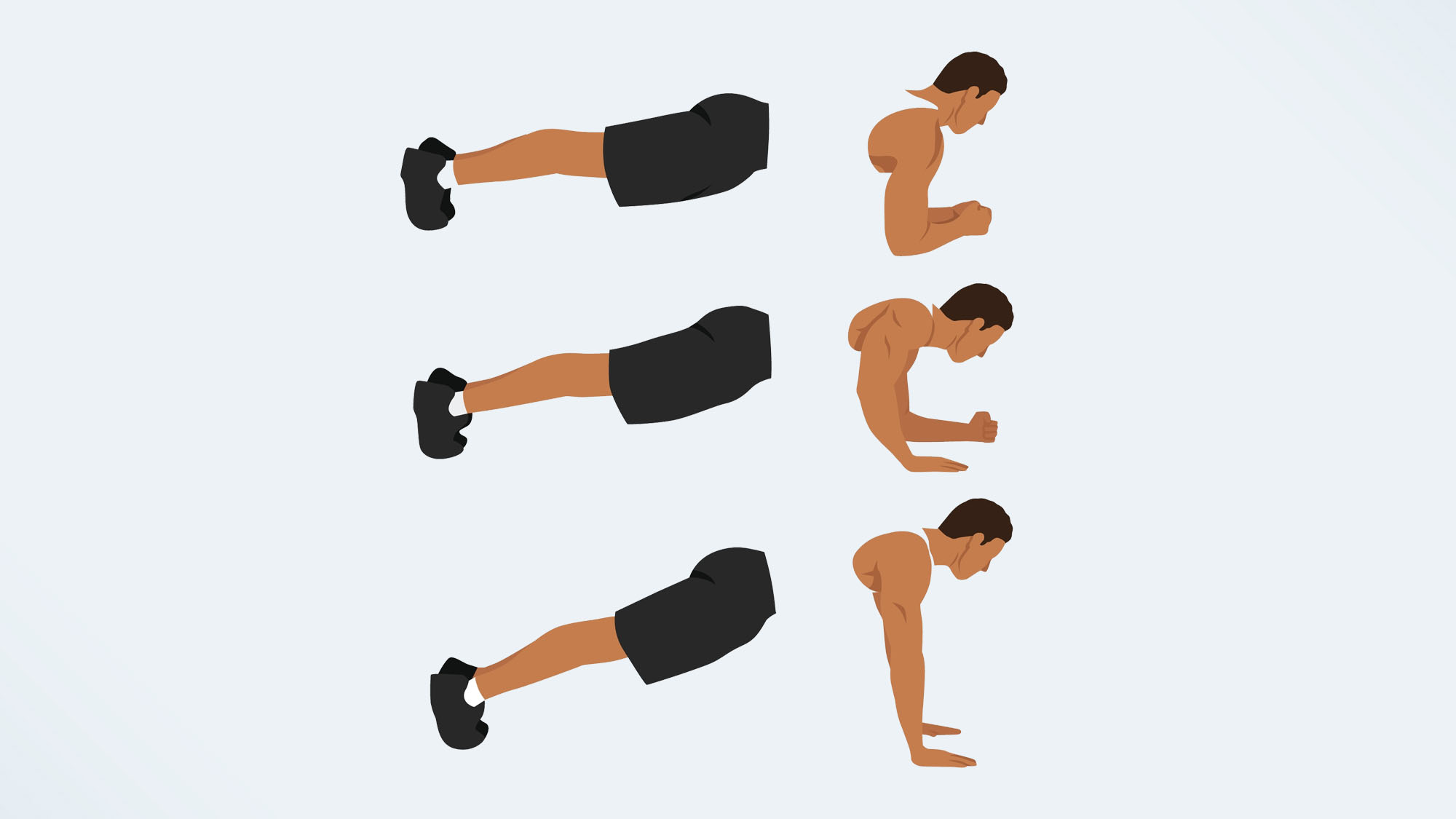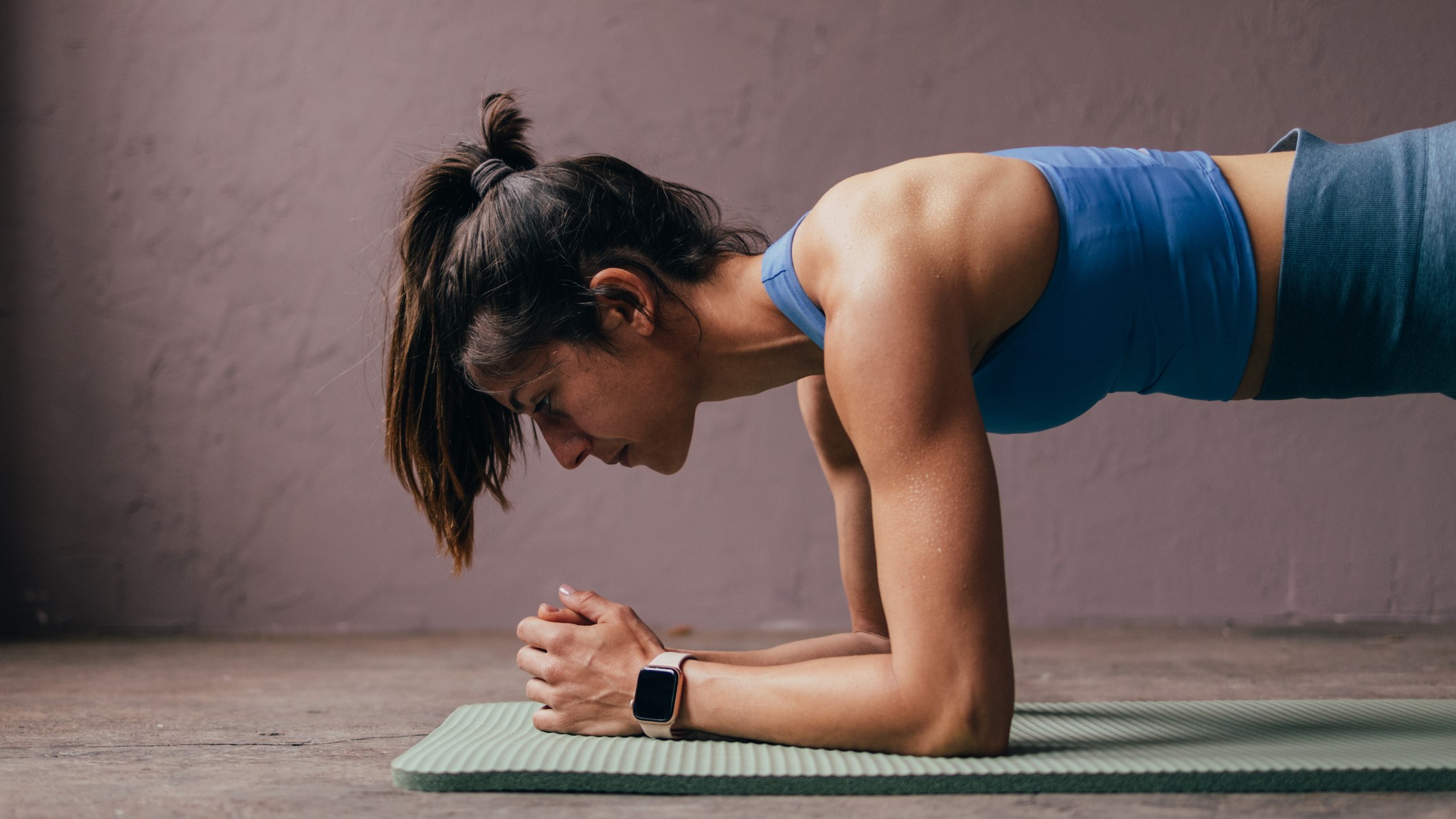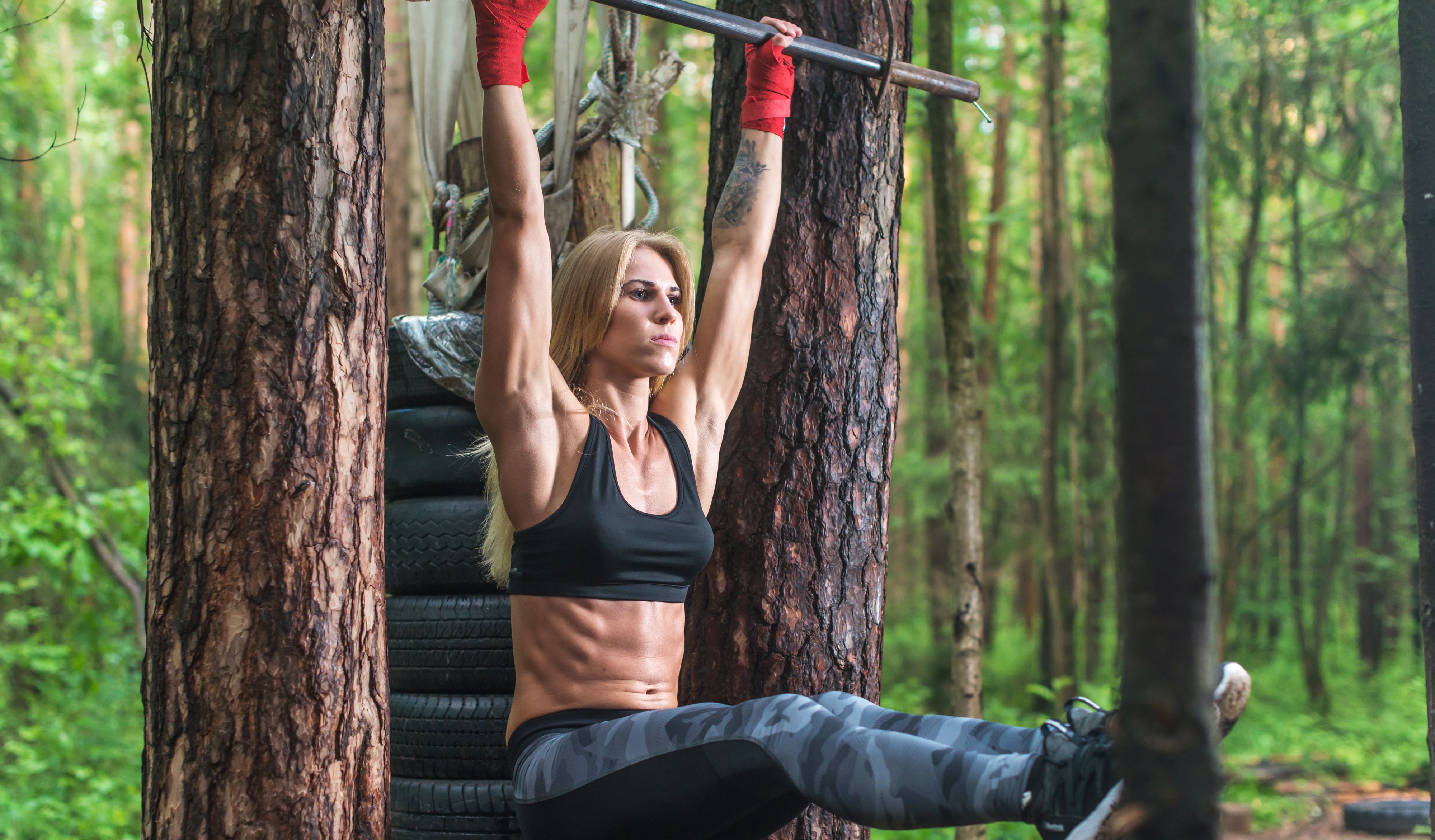
We’ve done plenty of plank challenges at Tom’s Guide. If there’s a plank variation, one of us has jumped on it for a fitness challenge. But one plank I had yet to conquer was the commando plank, so I added 90 reps to my daily routine for one week.
I admit, I do love the plank exercise. Whether it’s a weight training session or a bodyweight workout, the plank seems to fit nicely into either. It’s known primarily for its core strengthening abilities but the exercise also targets and builds strength in your shoulders, chest, back, glutes, hamstrings, and quad muscles — basically, your entire body.
It does this using isometric contraction — holding muscles under tension without them lengthening or shortening (flexing or extending). It’s one way to activate muscles under less load, but plenty of plank variations exist to torch muscles more, using movement. Find out what happened when I took on 90 commando planks every day for a week and why I probably won’t again. And these are the best yoga mats to do your planks on.
How to do commando planks

To do a commando plank, move from a high plank position to a forearm plank and back again. You can learn how to do an up-down plank and variations to master here.
How:
- Start in a plank position on your mat with elbows extended, shoulders over wrists, and hips in line with your shoulders (here’s how to do a plank)
- Brace your stomach and lower your left elbow onto the mat underneath your left shoulder, followed by your right
- Pause in a plank position on your elbows, then press your left palm back onto the mat followed by your right hand.
Switch your leading arm each time to work the body evenly, and keep your hips square to the mat without swinging your torso. This move is about slow, controlled movement.
Unlike a regular plank, commando planks or “military planks” also work more of your chest, arms (including your triceps), and shoulders and raise your heart rate. Strengthening the muscles in your lower back, glutes, and hamstrings will support better posture and protect your spine while developing a strong core helps you lift heavier, run faster, and function better with less chance of injury.
Sign up to get the BEST of Tom's Guide direct to your inbox.
Get instant access to breaking news, the hottest reviews, great deals and helpful tips.
I did 90 commando planks every day for a week — here’s my results
Commando planks are a full-body burner. For beginners, practice holding a plank for extended periods beforehand. You could also use your knees to help you adapt to the movement pattern. To advance the exercise, try wearing a weight vest or balancing on one leg.
Day 1
I like approaching the commando plank like ripping off a band-aid — just get it done and think about the pain afterward. I program commando planks for clients regularly, so I’m used to demonstrating and doing them myself, but perhaps not 90 reps in one go.
My approach on day one was to tackle them head-on with very little rest and move consistently. That tactic worked until around 50 reps when the shoulder burn began. At this point, I decided to add a 45-second rest halfway through for the rest of the week.
Days 2 and 3
After day two, my arms were feeling it, but I couldn’t feel it anywhere else, so I added a weighted vest to spice things up. I only recommend working with a weighted vest if you feel confident knowing how to. They’re great for making bodyweight resistance exercises harder but add extra load on your joints, particularly during aerobic activity. If you have issues with weight-bearing activities, a weighted vest might not be suitable.
Personally, it helped me ramp up the intensity and increase my heart rate and muscle engagement. Pushing back up against the additional weight got me trembling through the remaining reps with a sweaty indignance that I had no one to blame for.
Days 4 and 5
90 reps of anything is a fair number of reps, and while I would encourage high reps in a workout — loads of classes adopt high-rep endurance strategies or max reps against a time cap — I wouldn’t do it for one move every day for a week.
Despite years of weight training, I occasionally need to nudge myself to keep my core active. A surefire way to realize you’re not is a very sore lower back.
By day five, it was time to focus on re-engaging my core, resetting my form every 30 reps. We spoke to calisthenics coach Jase Robinson when creating this calisthenics workout. He reiterated the importance of compound contraction — contracting every muscle simultaneously, including the back, belly and bum.
He adds that this helps people focus on bigger muscle groups while “subconsciously contracting all the smaller supporting muscles.” By using conscious contraction, Robinson says you’ll improve coordination, too.

Day 6
With one day to go and 450 reps down, I was sore. Unilateral training is brilliant for testing and building balance and neuromuscular coordination, but loading repeatedly onto one shoulder at a time, albeit brief, tested my weaker left shoulder muscles hard. I whipped the weighted vest away and spent the last two days focusing on slower movement and shoulder stability.
Day 7
At last, the day came. Polishing off the last of my reps with whippet speed and more vigor, I reflected on what I had learned.
I was sore, my left shoulder felt sensitive, and my upper body felt fatigued like I’d just done endless push-ups, but overall, it wasn’t as bad as I thought. Alongside my daily cool-downs, I’m adding these 5 shoulder stretches for the next week or so to relieve tight shoulders, and I’m also taking the opportunity to practice hanging from a bar.
A bit left field, I know, but the dead hang (see below) is great for stretching your upper body, and research has shown it could improve forearm and grip strength, too — the perfect prep for the next fitness challenge.

More from Tom's Guide

Sam Hopes is a level 3 qualified trainer, level 2 reiki practitioner and senior fitness writer at Tom's Guide. She is also currently undertaking her Yoga For Athletes training course. Sam has written for various fitness brands and websites over the years and has experience across brands at Future such as Live Science, Fit&Well, Coach, and T3.
Having worked with fitness studios like F45 and Virgin Active, Sam now primarily teaches outdoor bootcamps, bodyweight, calisthenics and kettlebells. She also coaches mobility and stretching-focused classes several times a week and believes that true strength comes from a holistic approach to training your body.
Sam has completed two mixed doubles Hyrox competitions in London and the Netherlands and finished her first doubles attempt in 1:11.
-
BountyRook This is a tech website isn't it? What's with posting personal blogs?Reply
Secondly, a week doesn't showcase what an exercise actually would achieve for your physique.
